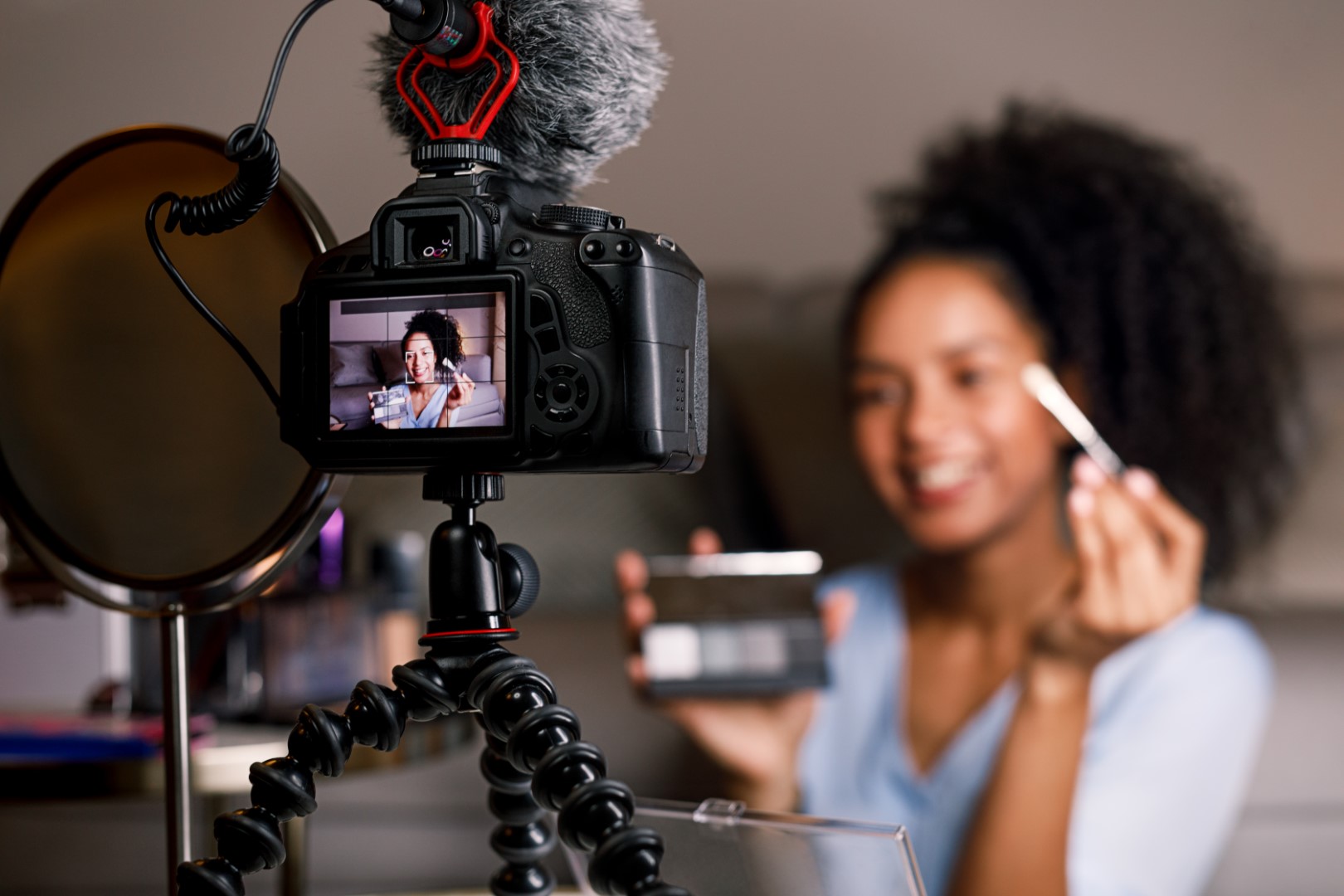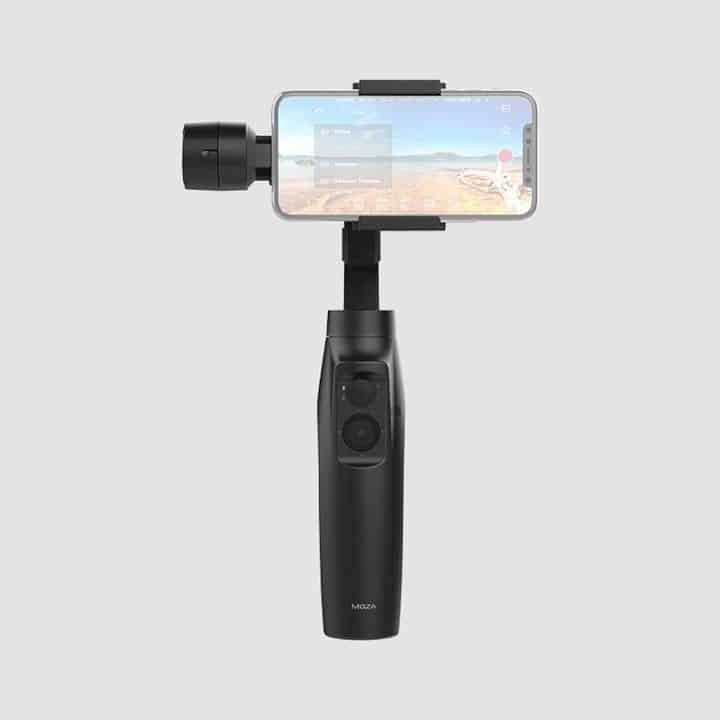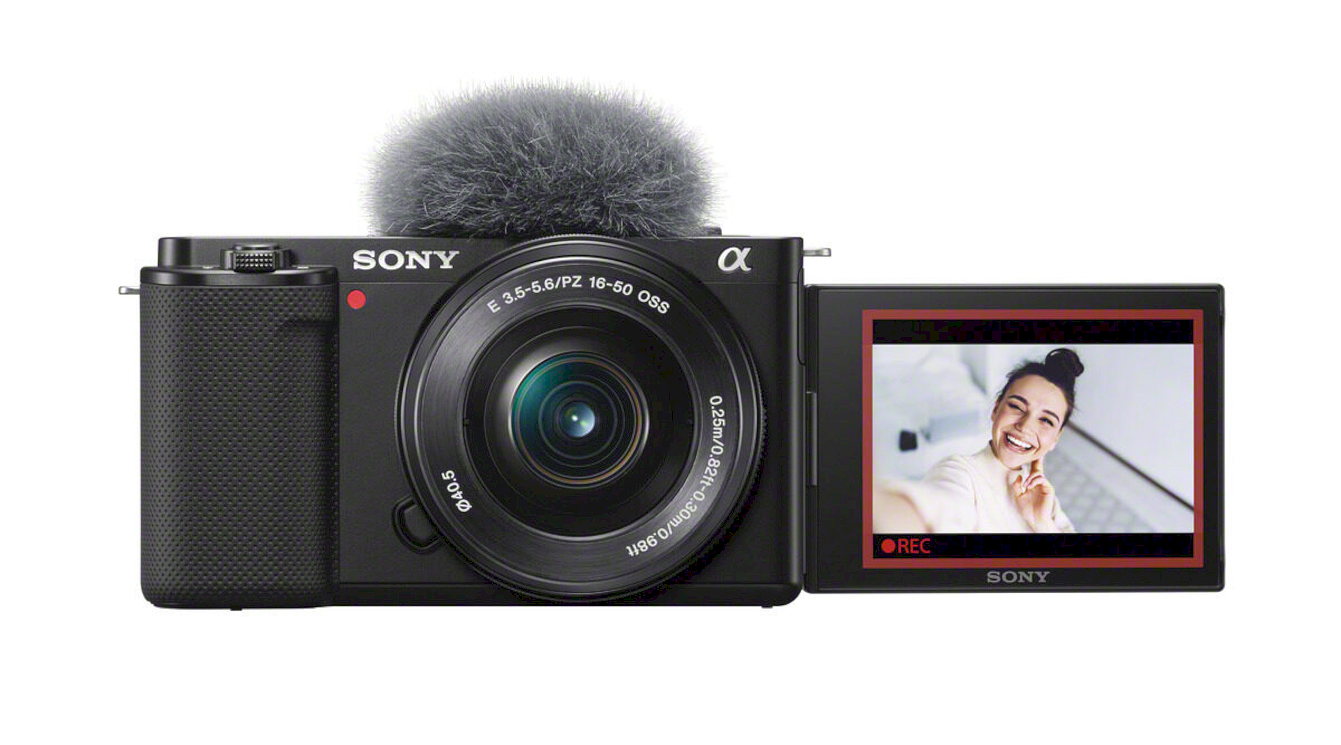As the world of content creation continues to evolve, finding the right camera for your YouTube channel has never been more important. In 2024, the market is brimming with options that cater to every aspiring vlogger’s needs, whether you’re just starting out or looking to upgrade your gear. This guide dives into the top 10 cameras that have become the go-to choices for YouTubers, offering a mix of quality, functionality, and innovation.
In the dynamic and competitive world of YouTube vlogging, having the right camera can make all the difference. As we step into 2024, the choices for cameras have expanded, offering aspiring vloggers an array of options to suit different styles and budgets. From high-end professional gear to budget-friendly options, our list of the top 10 YouTube cameras for this year will help you capture your vision with clarity and creativity.
The journey to becoming a successful YouTuber starts with great content, and great content begins with the right camera. In 2024, the range of cameras available for vloggers is more exciting than ever, blending cutting-edge technology with user-friendly features. Whether you’re a beginner or a seasoned creator, our roundup of the top 10 cameras for YouTube vloggers will guide you to find the perfect tool to bring your video ideas to life.
1. Canon PowerShot G7 X Mark III
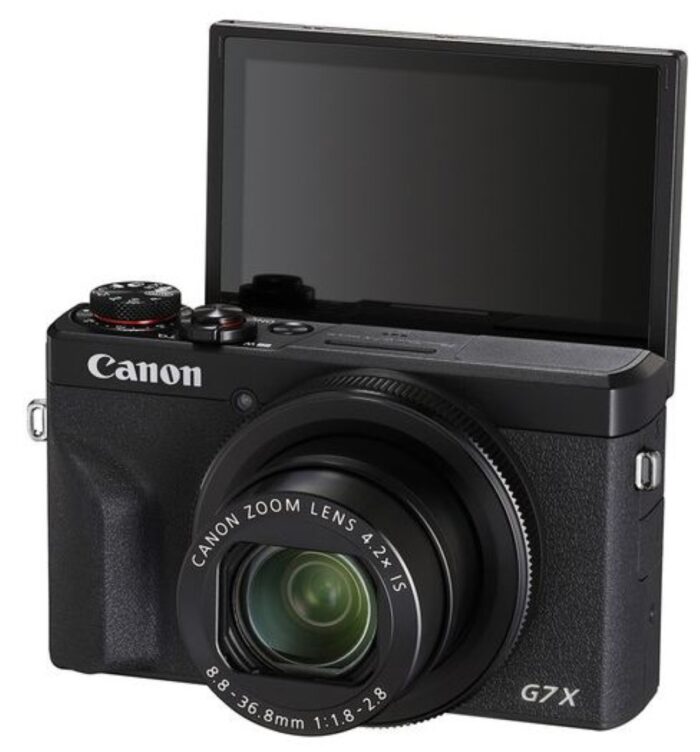
The camera is appreciated for its user-friendly interface, especially beneficial for those new to digital photography. Its touch screen is praised for easy focus point selection and shutter triggering. However, some users have noted the autofocus performance in video mode could be improved, especially in low light conditions. Canon addressed this with a firmware update, but some issues remain.
Value for Money
Priced at around $749, the G7 X Mark III is considered a mid-range compact camera. It offers features generally found in higher-end models, making it a good value for those seeking a balance between cost and advanced functionalities.
Target Audience
This camera is ideal for vloggers, travel photographers, and enthusiasts looking for a compact, easy-to-use camera with strong video capabilities. Its features cater well to users who want a portable camera that still offers high-quality images and videos.
Pros
- Compact and User-Friendly: Its layout is clear and easy to navigate, with a touch-screen that offers additional controls. The menu system is similar to Canon EOS DSLRs, making it familiar for Canon users.
- Good Image Quality: The camera produces very good quality images up to ISO 1600, with limited noise even at higher ISOs.
- Flexibility in Shooting: The touch-screen tilts forward, ideal for vlogging and selfies. The camera also offers Wi-Fi and Bluetooth connectivity for easy sharing and remote shooting.
- Customizable Controls: It features customizable control rings and buttons for personalized camera settings.
Cons
- Autofocus Performance Issues: In low light and with subject tracking in video mode, the autofocus can be less reliable.
- Limited Battery Life: Battery life is rated at 265 shots per charge, which is average for a compact camera. It’s recommended to buy an additional battery for extended use.
- Audible Control Ring: The control ring around the lens, while customizable, makes a noticeable clicking sound, which can be an issue when recording video.
2. Sony A6600
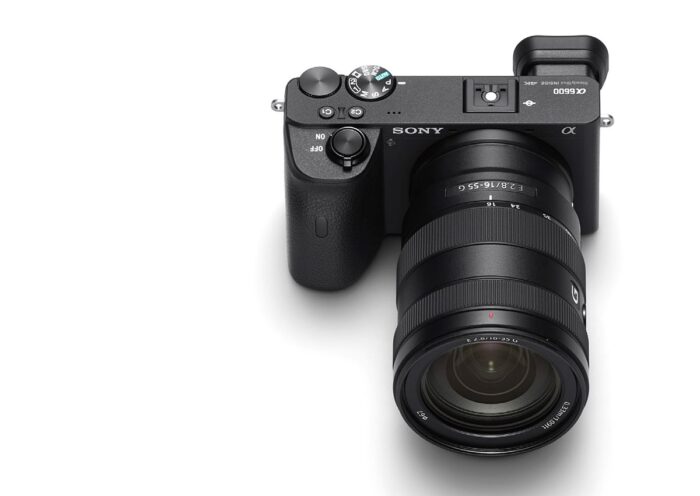
Users and reviewers generally praise the Sony A6600 for its excellent autofocus system, in-body image stabilization (IBIS), and high-quality 4K video capabilities. Its durable design with weather sealing makes it suitable for various shooting conditions, especially landscapes. The camera is also appreciated for its improved ergonomics and handling due to a larger grip, accommodating a bigger battery.
Value for Money
While the Sony A6600 is considered expensive compared to other APS-C cameras, its advanced features and performance justify the price for many users. Its video capabilities and the wide selection of compatible lenses add to its value, especially for content creators.
Who Is It For?
The Sony A6600 is particularly well-suited for serious photographers and videographers who require a reliable and versatile camera. Its features cater to a range of needs, from action sports photography to landscape and travel photography. The camera’s autofocus capabilities and video performance make it a strong choice for content creators as well.
Pros
- Excellent Autofocus System: Fast and accurate, ideal for both still photography and videography.
- In-Body Image Stabilization (IBIS): Enhances the quality of handheld shooting.
- High-Quality 4K Video Capabilities: Suitable for advanced video work.
- Durable Design with Weather Sealing: Makes it robust for outdoor use.
- Large Selection of Compatible Lenses: Adds versatility for various shooting styles.
Cons
- Expensive Compared to Other APS-C Cameras: Higher price point.
- Limited Touchscreen Functionality: Not as user-friendly as some competitors.
- Mediocre Battery Life: Despite a larger battery, it could be better.
- No Headphone Jack for Audio Monitoring: Limits audio control during video recording.
- Single Slow Memory Card Slot: Can affect the speed of shooting and data transfer.
3. Canon EOS M50 Mark II
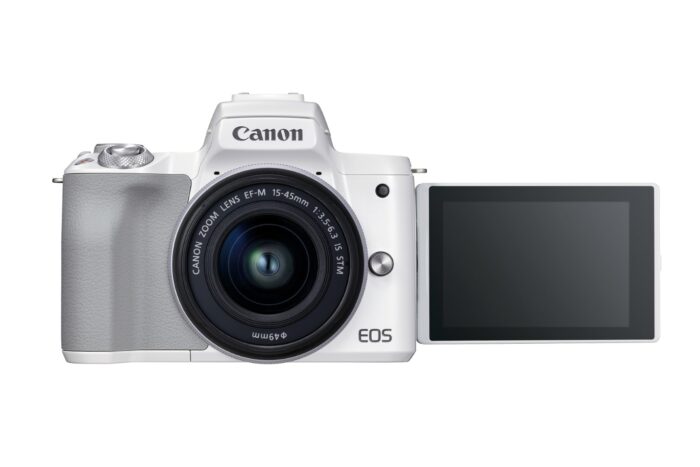
Users appreciate the Canon EOS M50 Mark II for its solid build quality and handling. It fits well in hand despite its small size, and the controls are user-friendly, especially for those transitioning from compact cameras. The touchscreen and viewfinder are particularly praised for their clarity and responsiveness. The Dual Pixel autofocus system is noted for its accuracy and speed, making it a reliable choice for various shooting conditions.
Value for Money
In terms of value for money, the EOS M50 Mark II is often seen as a solid investment for those who are entering the world of photography or vlogging. It maintains a good balance between quality and affordability, offering features like 4K video, a fully articulated screen, and a good-quality sensor at a reasonable price point. However, it’s worth noting that the camera doesn’t bring significant upgrades from its predecessor, the M50, which might affect its value proposition for current M50 owners.
Target Audience
The Canon EOS M50 Mark II is targeted primarily at beginner to intermediate photographers and vloggers. It’s particularly appealing to content creators due to its ease of use, compact size, and the ability to produce high-quality images and videos. Its guided interface mode makes it accessible for newcomers to photography, while still offering enough manual controls to satisfy more experienced users.
Pros
- Compact and Lightweight: Ideal for on-the-go shooting and vlogging.
- Fully Articulated Touchscreen: Great for self-recording and versatile shooting angles.
- Impressive Autofocus: With Dual Pixel AF and Eye AF, focusing is quick and reliable.
- Ease of Use: User-friendly interface, suitable for beginners.
- Solid Build Quality: Despite its plastic body, the camera feels sturdy.
Cons
- Lacks In-Body Image Stabilization (IBIS): This omission can affect the steadiness of handheld shots.
- Limited Manual Controls in Silent Mode: Restricts creative flexibility when shooting silently.
- 4K Video Limitations: The camera has a crop in 4K video mode and may not be the best choice for advanced video work.
- Not Fully Weather-Sealed: Might be a concern for outdoor shooting in challenging conditions.
- Missing Features: Such as a bulb timer and auto-rotating images, which could be beneficial for some users.
4. Fujifilm X-T4
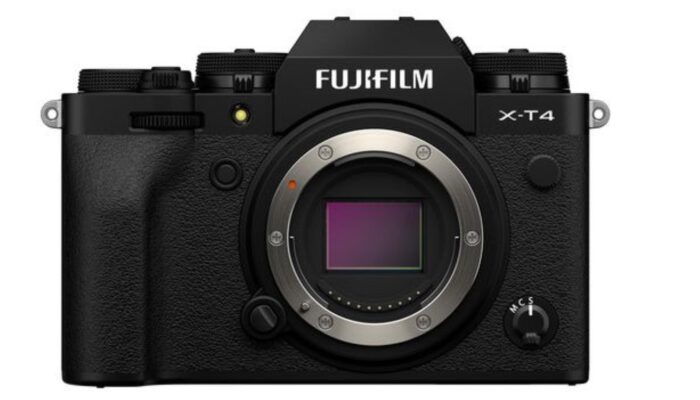
The X-T4 is praised for its hybrid functionalities, excelling in both photography and video. It’s particularly noted for its exceptional video quality, including DCI 4K capabilities. Users appreciate the hybrid switch button that allows easy toggling between photo and video modes, and the fully articulating screen is deemed highly useful for filming oneself or for achieving unique photography angles.
The 5-axis IBIS (In-Body Image Stabilization) system, offering up to 6.5 stops of stabilization, is a significant upgrade over its predecessors. It’s particularly beneficial for handheld photography and videography, helping to minimize motion blur and maintain smooth footage.
Value for Money
The X-T4 is considered a strong investment for both photographers and videographers. It offers advanced features like in-body stabilization and high-quality video recording, which are typically found in more expensive cameras. The value is heightened by its versatility, serving well in various shooting conditions and styles.
Who is it For?
The Fujifilm X-T4 is suitable for both professional and amateur photographers and videographers. It’s particularly appealing to those who require a camera that excels in both stills and video, offering a range of features that cater to diverse creative needs. Its compact size also makes it a good option for street photographers and travel vloggers.
Pros
- Hybrid Features: Good at both photography and video with features like DCI 4K and a fully articulating screen.
- IBIS: Offers excellent stabilization for both stills and videos.
- Battery Life: Improved battery life, almost double that of its predecessor.
- Film Simulation Modes: Unique modes like ETERNA Bleach Bypass offer creative flexibility.
- Design and Handling: Despite its features, it maintains a lightweight and robust build.
Cons
- Stability Limitations: While the IBIS is good, it doesn’t offer the same level of stability as some action cameras or smartphones.
- LCD Screen: The screen, while fully articulating, is considered outdated compared to newer, cheaper models.
- Usability Quirks: Some users find the control layout, particularly the drive mode dial, to be confusing or impractical.
- No In-Box Battery Charger: The camera doesn’t include a traditional battery charger; it’s charged via USB-C, which might be inconvenient for some users.
5. Canon EOS 90D
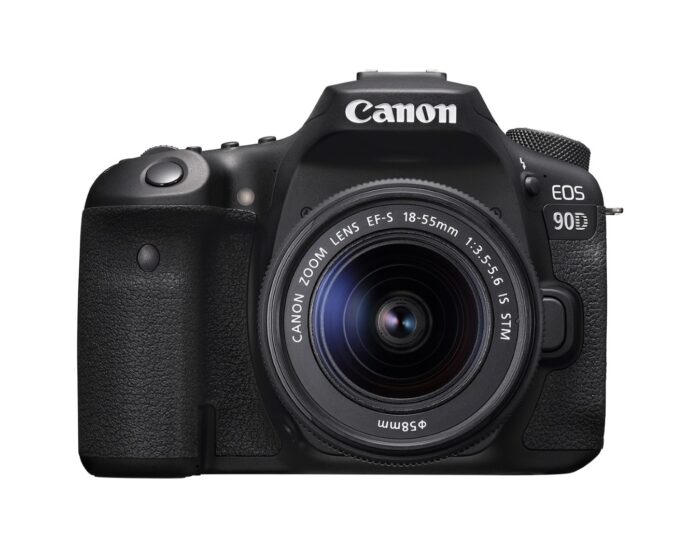
The Canon EOS 90D, released in 2019, has garnered a range of opinions and reviews in 2024. Here’s a summary based on various sources:
Generally, users appreciate the Canon EOS 90D for its high image quality, especially with its 32.5MP sensor. The camera’s performance in live view mode is highly praised, offering a mirrorless-style experience in a DSLR. However, some users find the weight and bulk of the camera, typical of DSLRs, to be a downside, especially when compared to lighter mirrorless systems.
Value for Money
The Canon EOS 90D is considered a good value for money, particularly for enthusiasts and Canon fans. It combines high-quality imaging capabilities with a robust feature set, making it a solid investment for those who prefer DSLR cameras.
Target Audience
This camera is well-suited for serious amateur photographers and enthusiasts. Its features cater to those who need high-resolution imaging, fast autofocus, and versatile video recording options, including 4K.
Pros
- High-resolution 32.5 MP sensor, delivering excellent image quality.
- Effective autofocus system, including face and eye detection.
- Versatile video capabilities, including uncropped 4K recording and up to 120fps in Full HD.
- Good battery life, with an optional battery grip available for extended shooting.
- Durable build with weather-sealing elements.
Cons
- Some advanced features are not activated by default and require digging into the menu.
- Autofocus performance in Live View mode is better than through the optical viewfinder, which might be a learning curve for traditional DSLR users.
- The camera feels bulky, which might be a disadvantage for those used to lighter mirrorless cameras.
- Limited to a single SD card slot, whereas some competitors offer dual slots.
- While weather-sealed, the build quality is not on par with Canon’s professional-grade cameras.
6. Nikon D780
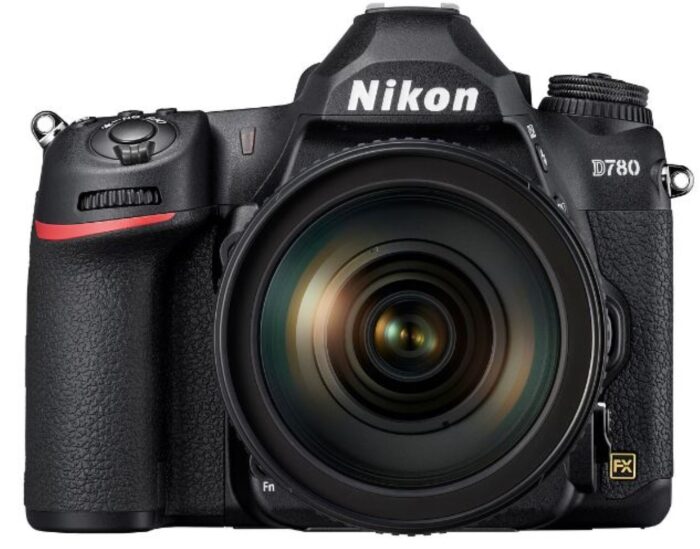
Users and reviewers have praised the Nikon D780 for its strong performance and great image quality. It is recognized for bringing many features from Nikon’s mirrorless technology into a DSLR, particularly in its video capabilities. The camera has been appreciated for its advancements over its predecessor, the D750, with improvements in processing, electronics, and a new sensor that enables phase-detection autofocus in live view, along with face- and eye-tracking.
Value for Money
Regarding value for money, the Nikon D780 is positioned as a higher-end DSLR, with a price reflecting its advanced features. While some may find it expensive, especially compared to mirrorless counterparts like the Nikon Z6, it justifies its cost with features like 4K video, a high-resolution sensor, and robust build quality. Its price reflects its positioning as a tool for serious photographers who need a reliable and versatile camera.
Who is it For?
The Nikon D780 is ideal for advanced amateurs and professionals who value the DSLR form factor and want to leverage Nikon’s vast F-mount lens collection. It’s particularly suited for those who need a camera that excels in both photography and videography. The long battery life, familiar DSLR handling, and robust construction make it a good fit for those who are used to DSLR cameras and prefer their optical viewfinder and handling.
Pros
- Excellent Image Quality: The camera offers a 24.5 MP BSI CMOS sensor with great low-light performance.
- Advanced Video Features: It supports 4K video up to 30 FPS and 1080p up to 120 FPS, with 10-bit N-Log capabilities over HDMI.
- Versatile Autofocus: It includes an advanced 51-point autofocus system with improved algorithms and on-sensor phase detection in live view.
- High ISO Sensitivity: The camera offers a native ISO range of 100-51,200, expandable up to 204,800.
- Strong Build and Handling: Nikon’s typical ergonomic design with robust construction.
Cons
- No In-Body Image Stabilization (IBIS): This feature is missing, which can be a drawback for some video and low-light photography situations.
- DSLR Form Factor: In an era where mirrorless cameras are becoming dominant, the D780’s DSLR nature may seem outdated to some users.
- Price: It’s more expensive than some of its mirrorless counterparts like the Nikon Z6, making it a significant investment.
- Weight: Being a DSLR, it is heavier compared to mirrorless cameras, which might be a factor for those who prefer lightweight gear.
7. Sony A7S III
The Sony A7S III has garnered high praise from users and reviewers alike for its exceptional video shooting capabilities. Its vari-angle touchscreen LCD, professional-grade audio recording with built-in headphone and microphone jacks, and intuitive interface have all been lauded. The camera has great low-light performance due to its wide ISO range and advanced image processing, making it ideal for challenging lighting conditions and astrophotography.
Value for Money
The Sony A7S III is considered a high-end camera, and while it carries a higher price tag compared to some competitors, it is generally seen as providing good value for money. This is due to its robust build, professional-grade features, and long-term reliability. Its price is deemed reasonable considering its class-leading specifications in 4K video and unmatched low-light capabilities.
Who Is It For?
This camera is tailored for both professional filmmakers and photography enthusiasts. Its ease of use makes it accessible for beginners, while its advanced features cater to the needs of professionals. It’s a top choice for those who need outstanding low-light performance and high-quality video capabilities, making it ideal for a wide range of applications from professional filmmaking to hobbyist photography.
Pros
- Exceptional Video Quality: Offers a variety of 4K video modes up to 120fps and is capable of 240fps slow-motion in Full HD.
- Impressive Low-Light Performance: Its low 12.1MP resolution on a new back-illuminated sensor excels in video and low light shooting.
- User-Friendly Interface: The menu system is easy to navigate with a fully operable touchscreen.
- Good Ergonomics and Build: Comfortable grip, logically placed controls, and weather-sealed construction.
- Excellent Battery Life: Capable of shooting video for around three hours on a charge.
- Useful Ports and Features: Includes USB-C, microphone and headphone ports, and supports dual, dual card slots for both UHS II SD and CFexpress Type A cards.
Cons
- High Price Point: While offering good value, the price is still high, making it a significant investment.
- Limited Stills Resolution: With a 12.1MP sensor, it doesn’t offer the same resolution for photos as some rivals.
- Additional Costs for Optimal Use: To get the most out of the camera, investments in CFexpress Type A cards, an external monitor, and potentially a gimbal may be necessary, adding to the overall cost.
8. Canon EOS R5
The EOS R5’s 45 MP full-frame sensor is praised for its significant improvement in low-light performance and dynamic range. It’s capable of shooting high-quality images even at high ISOs, such as ISO 8000, with relatively clean results.
The camera’s autofocus system is highly acclaimed for its accuracy and reliability in both photo and video modes, even under challenging conditions.
Users appreciate the in-body image stabilization, which combines optical and in-body stabilization to deliver superior results.
The R5’s video capabilities, particularly its 4K and 8K recording features, are lauded, although some users have noted concerns about overheating during extended use, particularly in demanding environments like the desert.
Value for Money
Considering its features and performance, the Canon EOS R5 is generally perceived as offering good value for money, especially for users who need its high-end capabilities.
The camera’s ability to produce professional-grade images and videos justifies its price for many users, particularly those involved in professional photography and videography.
Who is it for?
The Canon EOS R5 is ideal for professionals and serious enthusiasts, especially those who need high-resolution stills and high-quality video recording.
It’s suitable for a wide range of photography genres, from sports and action to studio portraits and landscapes, making it a versatile choice for many users.
Pros
- Outstanding image and video quality, with the ability to record in 8K and 4K.
- Reliable and fast autofocus system, effective in both daylight and low light.
- In-body image stabilization provides excellent shake compensation.
- Good ergonomics with a comfortable handgrip and intuitive controls.
- The camera’s build quality is solid, with a weather-sealed body.
Cons
- One of the most noted cons is the potential for overheating, particularly during prolonged 8K video recording.
- The camera is relatively heavy for a mirrorless model, which could be a drawback for some users, especially when paired with larger lenses.
- Some users have found the menu system to be overwhelming due to the multitude of functions and options.
- The electronic viewfinder, while high-quality, has been noted for some minor distortion around the edges.
9. Panasonic Lumix GH5 II
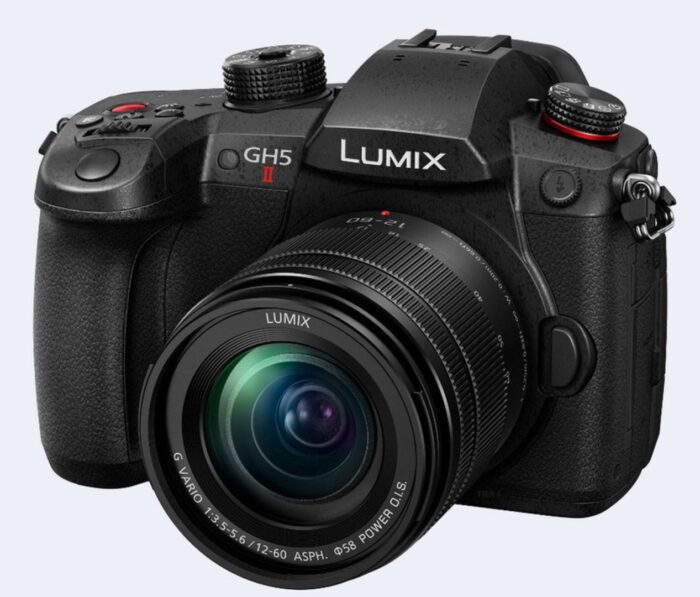
The Panasonic Lumix GH5 II, released in 2021, is a camera that has received considerable attention for its exceptional video features and durability. It is often praised for its advancements over the original GH5, making it a popular choice among content creators, especially travel photographers.
Users and reviewers generally praise the GH5 II for its excellent video capabilities, robust build quality, and user-friendly interface. Its wide range of compatible lenses and dual card slots also earn it high marks. However, some point out its smaller sensor size and the inconsistency in autofocus performance as drawbacks compared to its competitors, like the Sony A7III, Canon EOS R5, and Nikon Z6 II.
Value for Money
When it comes to value for money, the GH5 II is considered a strong contender in its category. It offers significant improvements over the original GH5, such as unlimited 4K 60p 10-bit internal recording, live streaming capabilities, and enhanced in-body image stabilization. These features, combined with its versatility and durability, make it a worthwhile investment for professionals and serious enthusiasts alike.
Who Is It For?
The Panasonic Lumix GH5 II is aimed at both stills photographers and videographers. Its blend of high-quality video recording features and robust photography capabilities make it an excellent choice for content creators who require a versatile tool. The camera is particularly well-suited for travel photography, vlogging, and professional videography, given its portability and range of video-centric features.
Pros
- Excellent Video Capabilities: The GH5 II is praised for its superior video recording features, including 4K 60p 10-bit internal recording and live streaming capability.
- Durable Build and Weather Sealing: The camera has a sturdy construction that is weather-sealed, making it suitable for various shooting conditions.
- User-Friendly Interface: It offers a customizable interface and a user-friendly menu system.
- Improved Battery Life: Compatibility with higher-capacity batteries offers extended shooting times.
- Enhanced Stabilization: The camera provides dual 5-axis in-body image stabilization, offering up to 6.5 stops of compensation with compatible lenses.
Cons
- Inconsistent Autofocus Performance: The autofocus can be unreliable at times, especially compared to competitors.
- Smaller Sensor Size: Its sensor size is smaller than some of its full-frame counterparts.
- Limited Low-Light Performance: Due to the smaller sensor, its low-light performance may not match that of full-frame cameras.
- No In-Body Image Stabilization for Some Lenses: This limitation can affect the versatility of the camera in certain shooting scenarios.
10. Fujifilm X-S20
The Fujifilm X-S20 is well-regarded in the photography community for its value for money and features. It’s priced similarly to the X-T4 but is more compact, making it an appealing choice for vloggers and content creators. The camera offers 6.2K video recording from a cropped sensor area and supports F-Log, F-Log2, and H.265 HEVC file formats, beneficial for post-production editing. Its autofocus system, improved over the X-T4, uses Deep Learning technology and AI for accurate subject detection. Additionally, it has a five-axis in-body image stabilization (IBIS) mechanism, offering up to a 7.0-stop advantage, which aids in low-light conditions and handheld shooting.
Who is it for?
The Fujifilm X-S20 is ideal for vloggers, content creators, and intermediate photographers who require a blend of high-quality video and still photography capabilities in a compact, user-friendly package.
Pros
- Unlimited video recording capability
- Advanced video features including 4K/60P and 1080/240P
- Enhanced autofocus with subject-detection
- Effective IBIS for stable shots
- Lightweight and compact design
Cons
- Image stabilization is not as effective in close-up video scenarios
- Limited to 6.2K video; lacks 8K capability of some competitors
In closing, selecting the right camera is a pivotal step in your vlogging journey. As we’ve explored, the best camera for you depends on your unique needs, style, and budget. Whether you’re drawn to the advanced features of professional-grade cameras or the simplicity and affordability of entry-level models, each camera in our top 10 list for 2024 brings something special to the table. Remember, the quality of your content and your storytelling skills are as important as the gear you use. So, choose a camera that complements your creative vision and embark on an exciting journey of content creation on YouTube. Happy vlogging!
